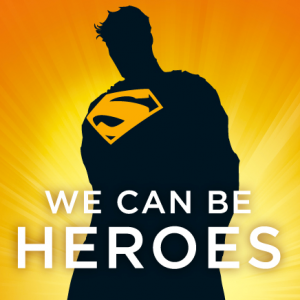
People are not trees. If they do not like anything, they can change it. No matter how these changes will be accomplished, for example, through rebellions, wars, conquests, or through charities, sports, and education, the main aim is to change their lives and others for better ones. However, not all people are ready to alter their stable world. Different researchers (Smith, 2006; Toleffson, 1993; Polster, 2001; Moore, 2009; Merriman, 2008; Yunus, 2000; and DuVall, 2004) explain the reasons why people need to take risks, describe assets of heroes, and provide samples of changing lives.
Changing a life requires courage, determination, and preparation. For instance, Smith (2006) examined what motivates people to challenge themselves through extreme sports. He found out that from the ancient time people had felt exhilaration of danger that made them more cautious, dexterous and smarter. While currently, people’s lives are secured enough from any harm and danger, that Type T (thrill seekers) seeks them in extreme sports to understand “how far they can go” (p. 159). However, Smith argues that there is a negative side of “adrenaline junkies”, as they may switch to consuming drugs, alcohol, and gamble. That is the easiest and the worst way to change a life where the result is lamentable. Moreover, Smith (2006) disputes about unnecessary risking that leads to taxpaying for someone’s injury. Therefore, it is helpful to consider turning thrill seekers’ interests, excitement and energy into useful and valuable activities.
Obviously, a person who wants to change his and others’ lives should have assets that make people to believe and follow him. First of all, it is important to mention that the definition of “heroism” can be interpreted differently. For instance, Toleffson (1993) believes that heroes are leaders, inspirers, possibility creators such as Gandhi and Martin Luther King. Jr. Yet Polster (2001) states that “ordinary women and men are actually heroes” (p. 161). While Moore (2009) provides practical examples of real heroes, their acts and attitudes. For example, she mentions about Bill Drayton and Lara Galinsky who set companies to finance and support social entrepreneurs and leaders. It seems that understanding and perception of a hero is diverse; however, some characteristics such as courage, energy, charm, a precise vision of life, perseverance, motivation, respect, effectiveness are common.
Where there is a strong wish to improve a life, there will be always various ways to achieve it. Most of the time nonviolent actions and charity programs work perfectly to reach a goal. DuVall (2004) analyzes the success of nonviolent fighters in the movements. There is a doubt whether DuVall’s identified factors of achievements are applicable in some countries like Kazakhstan. Here it may have opposite result with huge troubles. However, Yunus (2000) demonstrates another way of doing good things such as Grameen Bank which gives loans to poor people. He strongly believes that “poverty is not in the person. It is created by the system” (p. 169), and he gives an opportunity to people to change that system. It looks like a perfect way of aid in the 21st century, when it is worthy to teach how to earn money rather than just to give money.
In summary, the authors studied about the risking change from various angles, and delineated it starting from arguments of taking risks, features of heroes, and ways of making change. However, given characteristics of a hero and methods of altering a way of life can be debatable as every person interprets them individually and in some context it might not be relevant. Therefore, for the further research, it is useful to provide more examples of best reformers among ordinary people from various spheres and countries to explicate, inspire, and show variations of improving a life.
References:
DuVall, J. (2004). Outside view: liberation by the people. In N. E. Dollahite, & J. Haun
(Eds.), Academic writing from sources (pp. 169-171). Boston, MA: National
Geographic Learning.
Merriman, H. (2008). Agents of change and nonviolent action. In N. E. Dollahite, & J. Haun
(Eds.), Academic writing from sources (pp. 165-167). Boston, MA: National
Geographic Learning.
Moore, J. (2009). Extreme do-gooders – what makes them tick? In N. E. Dollahite, & J. Haun
(Eds.), Academic writing from sources (pp. 163-165). Boston, MA: National
Geographic Learning.
Polster, M. (2001). Eve’s daughters. In N. E. Dollahite, & J. Haun (Eds.), Academic writing
from sources (pp. 161-163). Boston, MA: National Geographic Learning.
Smith, J. (2006). Living in the Edge: extreme sports and their role in society. In N. E.
Dollahite, & J. Haun (Eds.), Academic writing from sources (pp. 157-159). Boston,
MA: National Geographic Learning.
Toleffson, T. (1993). Is a hero really nothing but a sandwich? In N. E. Dollahite, & J. Haun
(Eds.), Academic writing from sources (p. 160). Boston, MA: National Geographic
Learning.
Yunus, M. (2000). The role of the corporation in supporting local development. In N. E.
Dollahite, & J. Haun (Eds.), Academic writing from sources (pp. 167-169). Boston,
MA: National Geographic Learning.
Aigerim Myrzabayeva